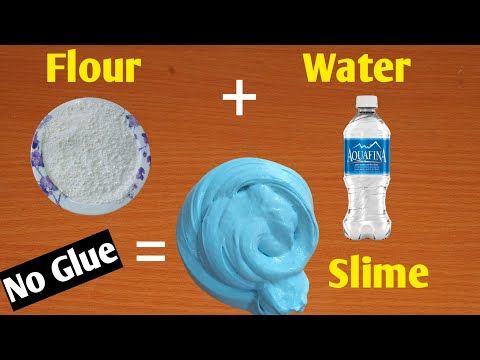“`html
How to Make Slime at Home: A Fun and Easy Guide for Parents
Welcome to the ultimate slime-making guide, dear parents! If you're looking for a fun-filled activity to keep your kiddos engaged, you're in the right place. Making slime at home is not only easy and affordable; it's also an incredible way to introduce basic science concepts to your children. Let's embark on this gooey journey together!
Why Your Kids Will Love Making Slime
Slime isn't just a sticky substance; it's a vessel of creativity and endless amusement. Here are a few reasons why slime has become a beloved craft among kids:
- It's sensory play: Slime provides a unique tactile experience that enhances fine motor skills and sensory perception.
- Creative freedom: Your little ones can customize their slime with colors, glitter, and various add-ins.
- Educational fun: Slime-making is a practical lesson in chemistry without the daunting equations and terminology.
What You'll Need to Make Slime at Home
Before we dive into the nitty-gritty of slime crafting, let's make sure you've got all the necessary ingredients. Thankfully, you'll likely have most of these items lying around the house:
- 12 oz of white glue (clear glue works too)
- 1-2 teaspoons of baking soda
- Food coloring (optional for color)
- 2-3 tablespoons of contact lens solution (must contain boric acid and sodium borate)
- Glitter or other fun add-ins (beads, foam balls, etc.)
- A mixing bowl
- A mixing spoon or spatula
Note: The contact lens solution acts as an activator that transforms the glue into slime. Make sure it contains the necessary ingredients, as not all solutions will work.
Step-by-Step Slime Making Instructions
Ready to get messy in the name of science and fun? Follow this super easy step-by-step guide to making your first batch of homemade slime:
- Prepare Your Area: Cover your surface with newspaper or a disposable tablecloth. Slime can get a little messy, so this step will help with cleanup.
- Mix the Glue and Baking Soda: Pour the entire bottle of glue into your mixing bowl. Add in the baking soda and mix thoroughly until well combined.
- Add Color and Sparkles: This is where creativity kicks in! Let your kids choose their favorite food coloring and mix it into the glue and baking soda concoction. If you're planning to use glitter or other add-ins, now is the time to sprinkle them in.
- Add the Activator: Slowly add in the contact lens solution, mixing as you go. You'll notice the mixture starting to bind together and pull away from the sides of the bowl. This is the magical moment when your slime begins to form!
- Knead the Slime: Once the mixture becomes too tough to stir with a spoon, it's time to use your hands! Knead the slime until it reaches the desired consistency. It should be stretchy and not too sticky
“`

“`html
The Ultimate Guide to Making Slime at Home
Gather around, fun-loving parents and creative kiddos! Today, we’re diving into the squishy, stretchy world of homemade slime. Whether it’s a rainy day or you’re looking for an entertaining science activity, making slime at home is a surefire hit for all ages. Let’s get our hands sticky with this joyful craft!
Preparing the Slime-Making Extravaganza
Before we become slime wizards, there are few key things every parent should prepare for a seamless and joyful slime-making experience. Here’s what to know:
- Safety First: Always supervise your children during the slime-making process, especially when using chemicals such as boric acid found in contact lens solutions.
- Protect Surfaces: Line your workspace with old newspapers or a plastic tablecloth. Slime can be a bit messy, but that’s part of the fun!
- Measure Ingredients: Keeping the ingredients measured and ready goes a long way to ensure a smooth slime adventure.
- Pre-made Kits: Slime kits are available for purchase and can be a great starting point for first-timers.
- Choosing the Right Glue: Always use PVA glue (white school glue) for making slime as it’s safe and effective.
Understanding the Slime Science
Why does mixing a few simple ingredients result in the fun goo we call slime? It’s all thanks to the chemical reaction between the glue’s polyvinyl acetate and the borate ions from the contact solution or borax mixture, resulting in the polymer slime that’s so much fun to play with. Making slime at home is a fantastic opportunity to introduce children to basic chemistry concepts in a very hands-on way!
Slime Variations to Explore
Standard slime not enough? Explore the exciting world of slime variations!
- Fluffy Slime: Add shaving cream to your mixture for a fluffier, softer texture.
- Butter Slime: Mix in some clay for a spreadable and holdable texture.
- Clear Slime: Go for clear glue instead of white for a transparent and glossy finish.
- Crunchy Slime: Beads and foam balls make for a satisfyingly crunchy feel.
- Glow-in-the-Dark Slime: A bit of luminescent paint can make your slime light up the night!
Troubleshooting Common Slime Issues
Sometimes, slime doesn’t turn out as expected. Not to worry! Here’s how you can fix common slime fails:
- Too Sticky: Add a little more activator, but be cautious to not make it too rubbery.
- Too Brittle: A bit of warm water kneaded into the slime can help restore stretchiness.
- Not Forming: Double-check your ratios, specifically the activator, as it binds the slime together.
“`
. For more information see here
Disclaimer
The articles available via our website provide general information only and we strongly urge readers to exercise caution and conduct their own thorough research and fact-checking. The information presented should not be taken as absolute truth, and, to the maximum extent permitted by law, we will not be held liable for any inaccuracies or errors in the content. It is essential for individuals to independently verify and validate the information before making any decisions or taking any actions based on the articles.




